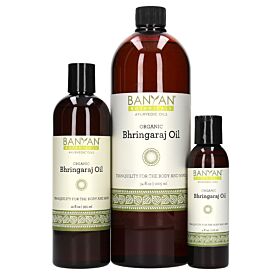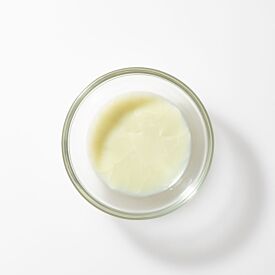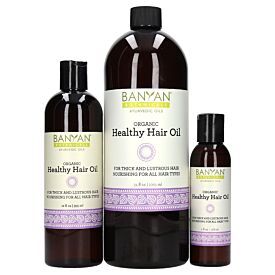7 Ayurvedic Ways to Care for Your Skin this Winter
In most areas of the United States, early winter is the time when the dryness of fall meets the cold of winter. This season brings the busy (and sometimes stressful) holidays, as well as ample opportunity for outdoor play with skiing, snowboarding, and snowshoeing.
Whatever winter activities you enjoy, there is one unpleasant experience that seems to be the norm for many this season—having dry skin.
Why does the skin dry so easily in winter? When we look at the Ayurvedic perspective of the skin and how the doshas play a role, we are given not only a broader understanding of the season, but also a treasure trove of tools to help us nurture and protect our skin, inside and out.
Winter Skin and the Doshas
Ayurveda states that winter is the optimal time of year to pay close attention to the care of our skin, since the skin is drier and ready to absorb all the nourishment we are willing to give it.
Moreover, while it is important to take care of our skin from the outside, we all know beauty comes from within, literally, making internal self-care just as essential to healthy, radiant skin. This is where the doshas come into play, as the winter season is a time of year when the qualities of vata and kapha doshas are high in the atmosphere and can cause imbalances both internally and externally.
This means that in winter, we must be careful to keep vata in balance, while trying not to aggravate kapha.
Therefore, when we aim to keep vata balanced, we want to consider ways to counter these traits by trying to include moisturizing, grounding, warming, and calming principles into our daily routine.
Learning your Ayurvedic constitution can help you home in on the best way to take care of your skin. Beyond that, here are seven easy ways to keep your skin healthy during this time of year.
1. Give Yourself a Massage
What better way to start your day than to give yourself a warm oil massage? Abhyanga, or self-massage with oil, is an ancient practice that helps warm the body by improving circulation and offers amazing support for reducing stress, calming the mind, providing moisture and protection for the skin, and many other benefits!
During the winter season, use either Sesame Oil or Vata Massage Oil before a daily morning shower or bath. These oils are warm, grounding, and nourishing—perfect for balancing vata.
2. Use Soaps and Hot Water Wisely
When bathing or washing your face, be sure to use water that is not too hot, and try to limit soap use to the areas that actually get grubby. Hot water, as well as misuse of soap, will strip away the much-needed oil from your skin.
When you do wash, using a gentle Ayurvedic soap can be very cleansing and supportive for your skin. Banyan's soaps use dosha-balancing herbs and essential oils that are gentle enough to be used daily to support clean, clear, moisturized skin from head to toe.
3. Support Your Scalp
While dandruff may be a sign of a fungal infection, it is more often dryness as a result of lack of blood flow to the scalp. Spending a few extra minutes every evening massaging your scalp with oil brings blood flow (and supports healthy hair!). Try an herbal oil like Healthy Hair Oil, Brahmi Oil, or Bhringaraj Oil.
How to Massage Your Scalp
- Warm the oil of your choice and lightly apply it to your scalp and the ends of your hair.
- Massage your head using slow, gentle, clockwise circles.
- Leave the oil on for at least 15 minutes or overnight. (The oil will stain, so protect your linens!)
- To remove the oil, “dry shampoo” your hair by applying shampoo before getting it wet, then wash.

4. Be Sweet to Your Feet
Whether you’re going for crisp winter walks in your neighborhood or you’re out braving the slopes, give your feet some rejuvenation before bed.
Soak them in a warm bath with dry ginger or any combination of rosemary, eucalyptus, and lavender essential oils. After soaking for at least 10 minutes, use a moist pumice stone to remove any dead skin cells that commonly build up on the bottoms of feet.
After this, take a few drops of Castor Oil or Beauty Balm and rub it into the heels and pads of your feet. Now put on a pair of old socks and take your brand-new feet to bed!
This treatment is extremely grounding and calming and is a wonderful way to relax. It is a perfect treatment to help calm kids before bed, too!
5. Put Your Best Face Forward
Facial skin can really take a beating during the winter months as it is often exposed to the elements.
Before you even set foot outside, prepare your skin by washing with non-soap based facial cleanser, or better yet, wash your face with oil. While the skin is still moist, apply some Sesame Oil (or other specially prepared facial oil) liberally to your face, neck, and lips.
If your skin is already windburned or extremely dry, add one drop of Castor Oil to your facial moisturizer. It is very important to apply the oil to moist skin because oil itself will not do the trick.
When you’re ready for your next outing, be sure to wear a scarf over as much of your face as possible any time you go outside, particularly if it is windy.
6. Eat a Vata-Pacifying Diet
To fully support your skin from the inside out, it’s important to enkindle your agni (digestive fire). A robust and healthy agni supports proper nourishment of all the tissue layers and is a major player in your skin’s overall health.
In winter, a vata-pacifying diet of grounding foods can help keep the digestive fire functioning at its best.
- Warm soups, stews, and chilies are the perfect food for this time of year.
- Well-cooked vegetables and hearty grains keep vata dosha balanced without being too kapha-aggravating.
- Dairy is also great for vata as it is heavy and has an oily quality, but use caution—dairy can be too cooling and heavy for kapha.
7. Include Turmeric
Turmeric's benefits abound, including its well-known ability to enhance the complexion and foster beautiful skin. And as it can balance both vata and kapha, it is a perfect spice for the winter months. Whether you choose to cook with it, take a supplement, or sip some golden turmeric milk, this versatile spice can support your skin, inside and out.
As always, the first step to better health is to take care of yourself by reducing the stress in your life, getting enough sleep, drinking clean water, and exercising properly. Just remember—by making a small effort every day, you can stay healthy for a lifetime!












